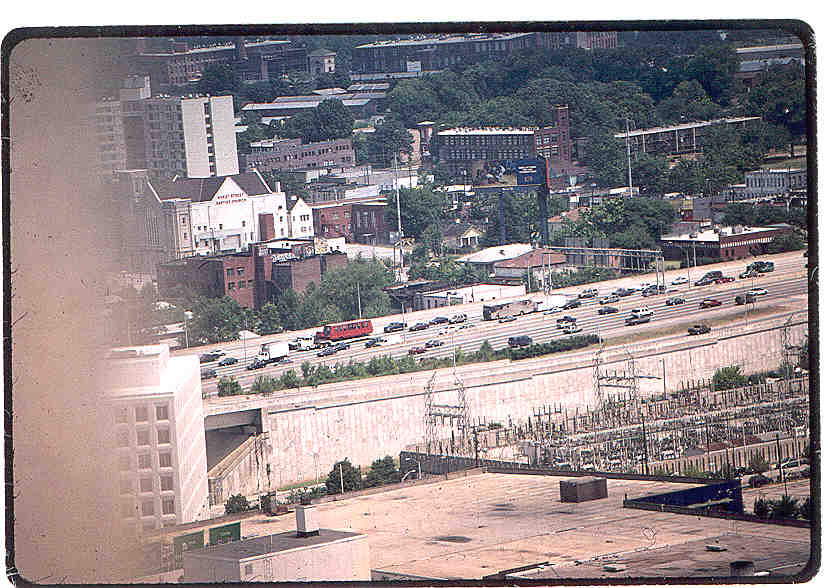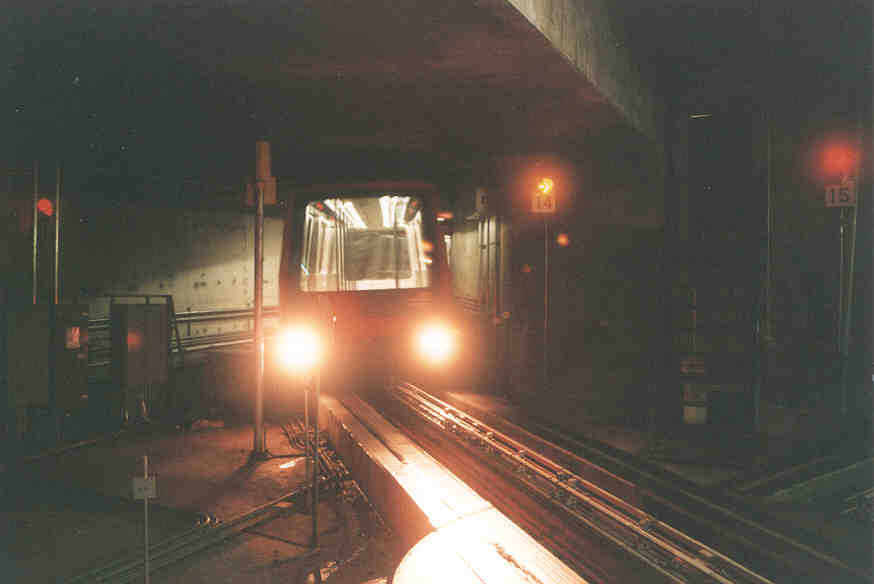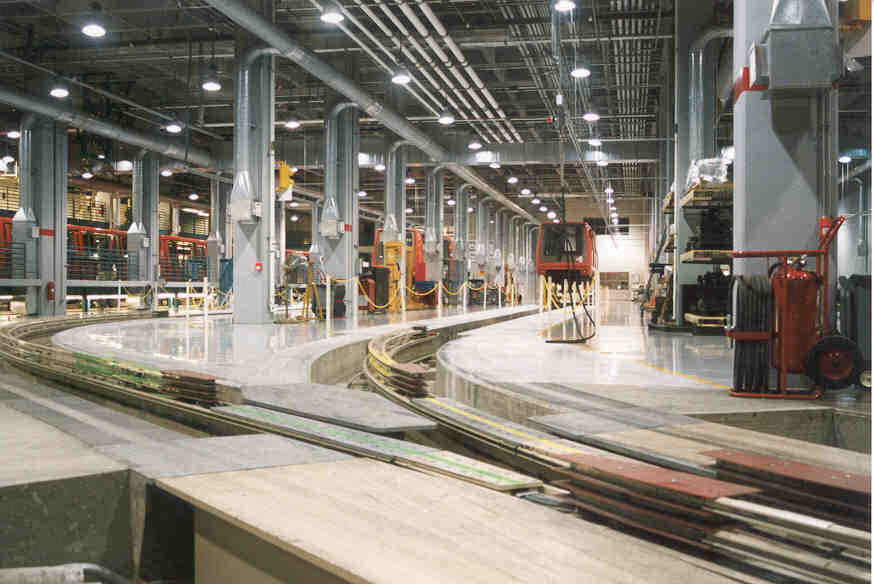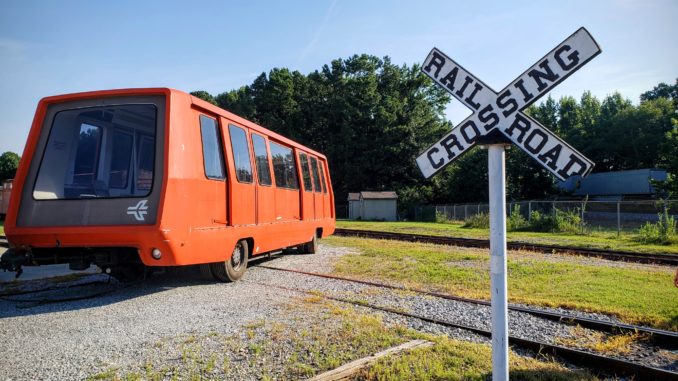
The C-100 APM grew out of a failed attempt at a futuristic rubber tire transit system technology.
In 1961, Westinghouse Electric Company began development of the Transit Expressway Revenue Line (TERL) or as more commonly called, Skybus. The system was the world’s first driverless (fully automated) transit technology.
Westinghouse marketed the system as the solution of the future for Port Authority Transit (PAT) of Pittsburgh. A short demonstration line was built and operated in Pittsburgh in 1965 and a plan was created for 60 miles of Skybus lines. After lengthy debates about the future of transit in Pittsburgh and lawsuits by Allegheny County and other groups, the Skybus plans were killed in the 1970s and PAT invested in busways and rail lines instead.
After the drawn-out defeat in Pittsburgh, Westinghouse came to realize that it had a technology that it was applying to the wrong problem.
In 1972, Westinghouse built the world’s first airport people mover at Tampa International Airport. The line was built using new C-100 vehicles that were updated Skybus technology vehicles. The line was a huge success and C-100 systems now exist in airports around the world including Atlanta, Denver, San Francisco and Frankfurt, Germany, as of the mid 2000s.
In addition, Miami and Singapore have implemented the C-100 system as a downtown circulator. Bombardier Transportation (who now owns the C-100 technology) has updated the C-100. The new replacement CX-100 model features better technology and improved streamlining.
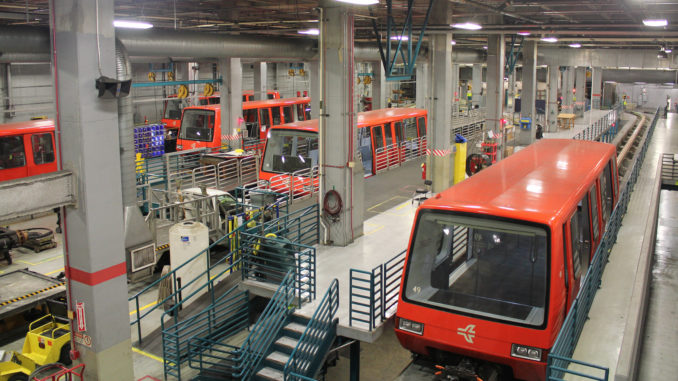
The Atlanta Airport APM
Hartsfield Jackson Atlanta International Airport’s people mover is one of the busiest and most complex systems of its kind in the world. In the mid 2000s, the system operated 19 hours each day, seven days a week and moved an average of 192,000 passengers daily between the landside terminal and five airside concourses. More than 400 million passengers had used the system since the start of service. The Atlanta APM is the largest in the world as determined by passenger count.
The initial people mover system began operation in 1980 with 24 vehicles. Over the next 20 years, system expansions and a route extension designed to service a new international concourse brought the total number of vehicles to 49. In 2001, Bombardier Transportation provided 24 new CX-100 vehicles to replace the original C-100 vehicles.
The System operates in an underground spine, which connects the main terminal and the separate concourses. Even with high-volume traffic and critical operation schedules, the system consistently operates above the 99 per cent availability rate.
#1 and #53 were donated to the Southeastern Railway Museum collection by the City of Atlanta Dept. of Aviation in 2002 with the assistance of Bombardier Transportation.
Photos: Paul Grether
TECHNICAL DATA ATLANTA C-100 (as of 2002)
VEHICLE
TYPE: C-100/CX-100 RUBBER TIRE PEOPLE MOVER
TRAIN CONSIST: 4-CAR TRAINS
SUBSYSTEMS
SIGNALLING: RELAY-BASED FIXED BLOCK
POWER SUPPLY: 600 VOLTS
POWER COLLECTION: GUIDEWAY-MOUNTED POWER RAIL
TRACTION POWER: 6 SUBSTATIONS
COMMUNICATIONS: P. A. SYSTEM, VEHICLE RADIO
SYSTEM
OPERATION: PINCHED LOOP
LENGTH: 7.0 KM / 4.4 MI
VEHICLE FLEET: 49 VEHICLES
TRAIN CONTROL: FULLY AUTOMATED
PEAK-HOUR CAPACITY: 21000 PPHPD
MAXIMUM GRADE: 0.25%
AVERAGE LINE SPEED: 12 MPH
FACILITIES
GUIDEWAY: TUNNEL
SWITCHES: 20
STATIONS: 14
STATION SPACING: 0.3 KM / 0.18 MI (AVERAGE)
PLATFORM LENGTH: 54 M / 180′
STATION FEATURES: AUTOMATIC PLATFORM DOORS, STATION DYNAMIC GRAPHICS
MAINTENANCE
BUILDING SIZE: 6503 SQ M / 70000 SQ FT
YARD OPERATION: MANUAL
MAINTENANCE YARD: 21 VEHICLE CAPACITY
For more photos and videos of the C-100 in action and on its way to the Southeastern Railway Museum, visit Paul Grether’s Westinghouse C-100 album on Flickr.


